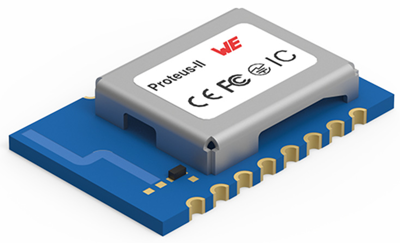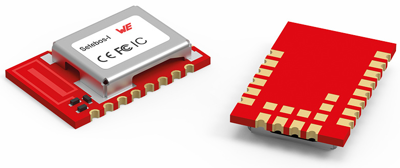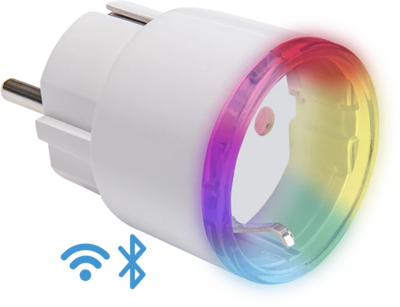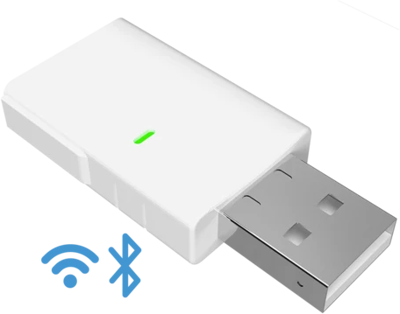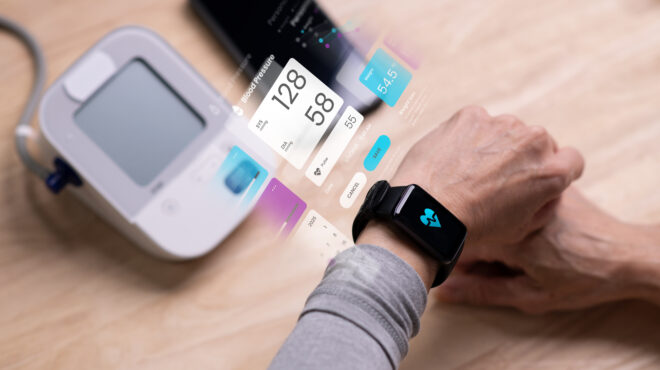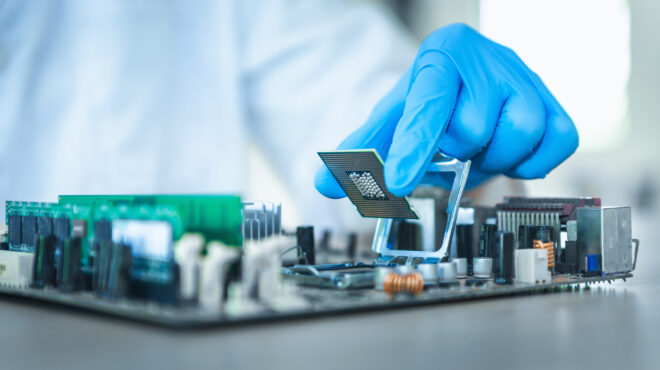
Bluetooth Technology Explained: What It Does and Why It’s Here to Stay
Wireless, simple, and everywhere: Bluetooth has become a core component of modern communication technology. But what exactly is behind this popular wireless standard? How does it work? When was it developed – and does it still matter today? In this article, we answer key questions and provide a comprehensive overview of Bluetooth standards, frequencies, ranges, and use cases – from Industry 4.0 to smart homes.
Table of contents
- What Is Bluetooth? A Quick Introduction
- A Brief History
- How Does Bluetooth Work?
- Everything about Frequency, Speed, and Range
- A Look at the Versions
- Where Is Bluetooth Used?
- Bluetooth in Industry 4.0
- Bluetooth and Smart Homes: A Perfect Match
- Does Bluetooth Have a Future?
- Small Technology, Big Impact
What Is Bluetooth? A Quick Introduction
Bluetooth is a globally standardized wireless technology used for short-range data transmission. It allows devices like smartphones, headphones, keyboards, and industrial modules to connect – no cables needed. Its main advantage? It’s energy-efficient and easy to set up.
The technology operates in the 2.4 GHz ISM band (Industrial, Scientific, and Medical), which is license-free worldwide. This frequency band plays a major role in the flexibility and suitability for industrial environments.
A Brief History
The technology dates back to the 1990s. In 1998, several major companies – including Ericsson, IBM, Intel, Nokia, and Toshiba – formed the Bluetooth Special Interest Group (SIG) to drive development of the new wireless standard.
The first official Bluetooth standard was released in 1999. The name was inspired by King Harald “Bluetooth” Gormsson, a 10th-century Danish ruler known for uniting Denmark and Norway – a fitting metaphor for a technology designed to bring devices together.
How Does Bluetooth Work?
Bluetooth uses a method called Frequency Hopping Spread Spectrum (FHSS). This means the signal jumps up to 1,600 times per second between 79 different frequencies in the 2.4 GHz band. The result is a stable connection – even in interference-prone environments like factories or offices.
Devices communicate through so-called piconets. One device acts as the master, while others are slaves. This allows multiple devices to connect simultaneously to a computer.
Everything about Frequency, Speed, and Range
Frequency
All versions operate in the 2.4 GHz ISM band, which is used globally and requires no additional licensing. This makes it easy to integrate the technology into a wide range of devices and applications.
Speed and Data Rates
Bluetooth has evolved significantly over the years, particularly in terms of data transmission. Speeds vary depending on the version. Newer iterations use Bluetooth Low Energy (BLE), combining efficiency with solid performance. The latest version, Bluetooth 6.0, announced in 2024, brings even more advancements.
Here’s a quick comparison of key versions:
| Version | Max Data Rate |
|---|---|
| 1.2 | 1 Mbit/s |
| 2.0 + EDR | 3 Mbit/s |
| 3.0 + HS | up to 24 Mbit/s |
| 4.0-4.2 | 1 Mbit/s (BLE) |
| 5.0-5.3 | up to 2 Mbit/s |
| 6.0 | up to 3 Mbit/s |
Range
Range also varies by versions. Some devices cover just a few meters, while others reach up to 100 meters. Bluetooth 6.0 may extend that to as much as 200 meters. However, real-world factors like walls and interference can significantly affect range – especially in industrial settings.
A Look at the Versions
The technology is constantly evolving. Since its debut in 1999, each new version has introduced improvements. These milestones demonstrate just how adaptable and forward-looking the technology is – from simple data transfers to advanced location tracking and industrial applications:
- Version 1.0–2.1: Basic functionality for data transfer
- Version 3.0: High-speed mode with Wi-Fi integration
- Version 4.0–4.2: Introduction of Bluetooth Low Energy (BLE)
- Version 5.0–5.4: Greater range, improved stability, lower power consumption – ideal for smart homes and Industry 4.0
- Version 6.0: Introduces Bluetooth Channel Sounding for highly accurate distance measurements between devices (within a few centimeters). Also features enhanced security and lower latency – especially relevant for gaming.
Bluetooth 6.0 continues to refine the standard to meet rising demands. Enhanced location accuracy and stronger security open new doors for applications like indoor navigation and secure data transmission.
Where Is Bluetooth Used?
From the living room to the factory floor to the doctor’s office – it is everywhere. It enables seamless communication between all kinds of devices, delivering wireless freedom across industries. Some common use cases include:
- Consumer electronics: Headphones, speakers, keyboards, mice, smartphones
- Smart home: Integrating sensors, switches, and lighting systems (e.g. with Shelly products)
- Industry 4.0: Machine communication, monitoring systems, sensor integration
- Healthcare: Fitness trackers, smart thermometers, medical devices
Bluetooth in Industry 4.0
In modern manufacturing, the technology shines thanks to its energy efficiency and ease of integration. BLE allows machine states, temperature, and motion sensors to be monitored continuously – without complex wiring. The result is flexible production, aligned with the goals of Industry 4.0.
Bluetooth and Smart Homes: A Perfect Match
Bluetooth is ideal for smart home control. Products like Shelly’s plug-and-play devices or the Shelly BB W smart switch connect easily and are app-controllable – without the need for Wi-Fi or a central hub. Setup is straightforward, and power consumption is minimal.
Does Bluetooth Have a Future?
Bluetooth is firmly established as a communication standard – and it’s not going anywhere. Ongoing development and integration into the next generation of devices suggest that its relevance will only grow. From wearable systems to logistics and building technology, it continues to be a future-proof solution.
Small Technology, Big Impact
Whether it’s high-speed laptop connections, wireless peripherals, or networked sensors in production, Bluetooth delivers versatility, efficiency, and staying power. With continuous improvements, it will remain a reliable partner for industry, office, and home for years to come.
Find the right products at Bürklin:
- Bluetooth modules
- Bluetooth adapters, keyboards & mice
- Shelly plug & play series overview


